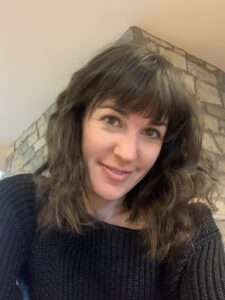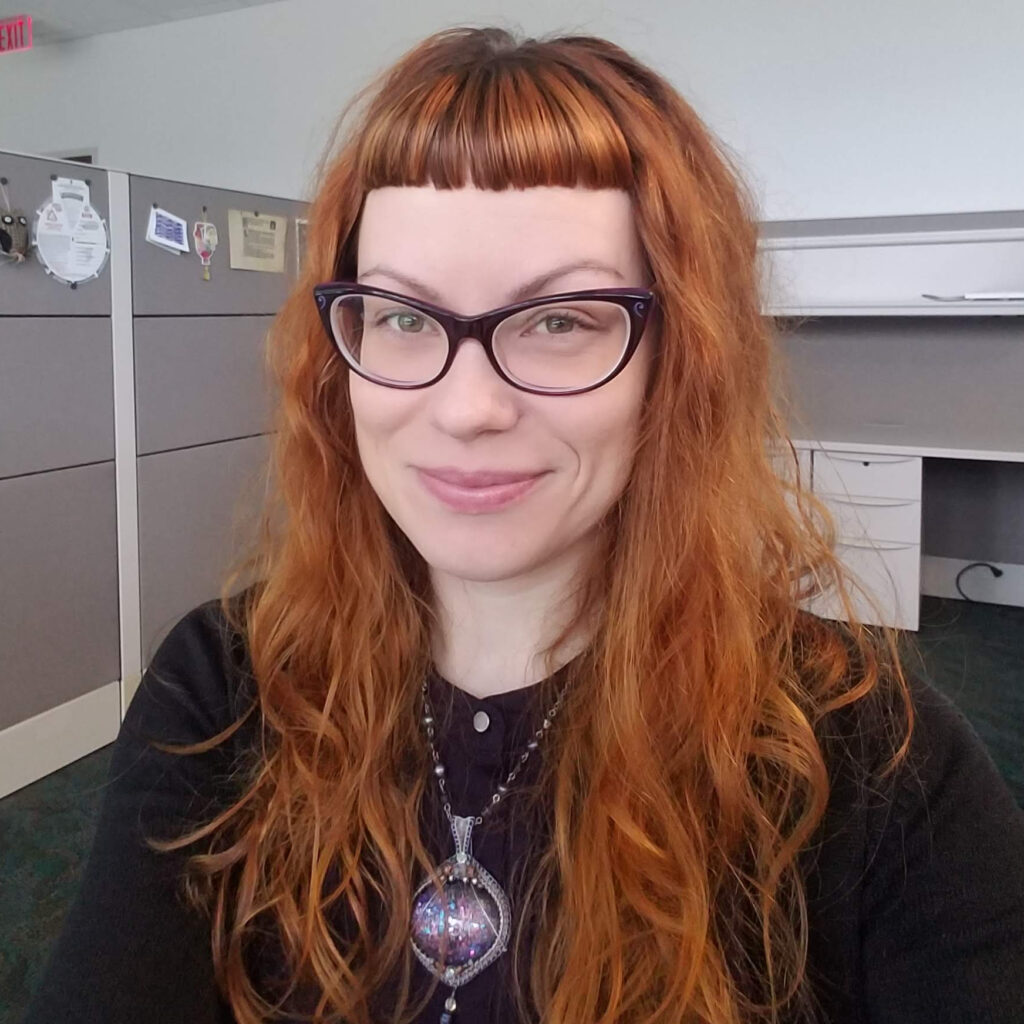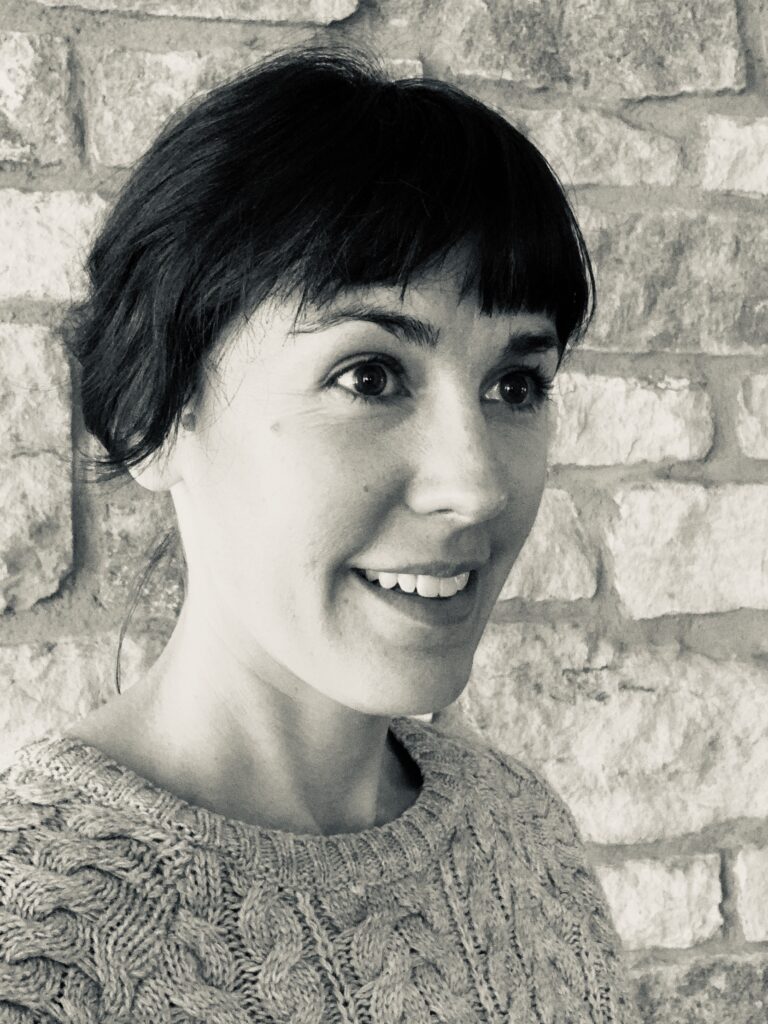
What degree are you pursuing at the KSU iSchool?
Master’s in Library and Information Science, with a focus on Archival Studies and Digital Preservation.
Tell us a little bit about your academic and/or professional background and areas of focus.
I have a BFA in Art History from Ohio University and an MS in Professional Writing from Towson University. My career up to this point has been in the publishing industry, mostly educational publishing, and for the past 13 years I have been a freelance writer/editor working in educational publishing.
For just about 14 years, I’ve wanted to be an archivist. I love history, and one of the most intriguing aspects of it is the way we continually uncover new facts and perspectives that allow us to see points in the past in a new way. Archives are where history happens. Most people don’t get a chance to visit archives, and they might appear at first like just a bunch of old records and books, until that is, you go looking for something in one. Then the archive comes alive. It’s a mystery, treasure hunt, and adventure all rolled into one. But they aren’t just shelves of books and boxes of papers anymore, increasingly they are digital, whether born that way or converted. What I really love about digital archives is their potential to bring that mystery, treasure hunt, and adventure right into people’s homes and offer new ways that we can discover important parts of our lives and our cultural heritage.
You’re interning with Ohio Outdoor Sculpture. What’s that like? What have you learned during your internship?
I’m just finishing up an internship with The Sculpture Center in Cleveland, working virtually on their Ohio Outdoor Sculpture (OOS) database and website (oos.sculpturecenter.org). Bill Barrow, who coordinates the project, has a reputation for being a mentor to up-and-coming library professionals and he does a great job trying to provide students with valuable experiences. He works closely with the MLIS program at Kent State to find interns.
When I heard about the project, I was really excited. I’m graduating at the end of this semester and still needed an internship since the one I had lined up last summer fell through because of COVID.
OOS is an online database of outdoor sculptures in Ohio, which includes images, location information and maps, historical data, and more. Its purpose is both as a reference tool and a means to encourage communities to preserve their outdoor sculpture. No other state has anything like it.
A team of four other interns and I were assigned 5-6 counties a piece and tasked with locating previously undocumented sculptures. The majority of sculptures included on OOS were clustered around Ohio’s major cities, and Bill really wanted to find out what, if anything, was in some of the more rural counties which had only a couple, and in some instances no, OOS-identified sculptures.
After doing some initial internet research and contacting libraries, historical societies, universities, and other organizations we thought might have information about sculptures in their areas, we (the interns) then do site visits to get pictures of sculptures we have leads on and almost inevitably stumble across some we didn’t even know were there. Once we find the sculptures, there is usually more digging we need to do to find out information about it to include on the site.
It has been fascinating from both an art and history perspective and also a great way to explore some places in Ohio that I have never been, despite having grown up here. The other side of the equation has been figuring out the metadata for the site so we are entering information consistently, providing users with what they want to know, and organizing it in ways that makes it more discoverable and usable.
Describe recent projects or research that you’ve been working on.
Last fall, I worked with Dr. Karen Gracy in an Individual Studies course to turn a paper I had done for her Digital Curation course into a publishable article. The topic of the paper was on privacy and access in archives with a special focus on how the issue is handled in digital archives and what the implications are for that. It is a topic I have touched on in a few of my courses and one that I find particularly fascinating because of the really complex layers there are to this issue. I revised and resubmitted it after a peer review to The American Archivist and am waiting on pins and needles to hear back from them about whether it will be accepted.
What iSchool classes have you enjoyed the most?
One of my favorite courses in the MLIS program at Kent State has been the Preservation and Conservation of Heritage Materials because I got to work firsthand with a small historical organization to assess their museum space and collections and help them submit a grant application to get money to improve their preservation efforts, which they won! It was satisfying to have an impact with real people and collections.
I also really enjoyed Dr. Marcia Zeng’s Cultural Heritage Informatics class. The project for the class was to create a website for a cultural heritage artifact of our choice, and I chose the Union Station Arch in Columbus (https://mcalho10.wixsite.com/union-station-arch). It was so much fun learning the history of this item and exploring all of the different ways to present information on it to users.
Dr. Zeng’s Metadata Architecture and Implementation course also ranks right up there at the top. I was the kind of kid who spent rainy Saturdays trying to organize her pennies and button collection, so metadata is intriguing to me. At the outset, it can seem fairly straightforward, but there is a surprising level of complexity to it when you really set about implementing it, which I got to experience even further in the OOS internship.
Are there any websites, apps, podcasts or other resources you’d recommend other students explore?
I would recommend taking a look at your local library to see what kind of historical resources they provide access to. Libraries are a great way to get information for free, and they offer a lot more than just books. Columbus Metropolitan Library for example provides (just to name a few) a digital collection of historical photographs, digital access to The Columbus Dispatch all the way back 1871, and one of my personal favorites, Sanborn Fire Insurance Maps, which if you haven’t checked out before, they are a wonderful way to visually explore the history of your city or neighborhood.
If you had one superpower…
Invisibility. So much I could learn. So many places I could go. My husband always says flying, but no way. Invisibility for sure.
How do you balance school with work and home life?
It’s less about balancing and more about juggling. Some balls are going to get dropped from time to time, and when they do, you pick them up and keep going. My husband is also pretty good at telling me when I’m getting too deep with school work or work-work (as I call it), and thankfully my three daughters are pretty understanding. My five year old, however, is really looking forward to me graduating. She’s got big plans for us.
Do you have any other advice for other students?
If you get the chance, go to a conference for your profession, it’s a great way to see what’s happening in the field, get to know people, and demystify some of the more intimidating aspects.
Do you belong to any professional organizations?
Society of American Archivists, Society of Ohio Archivists, and Ohio Digitization Interest Group.

